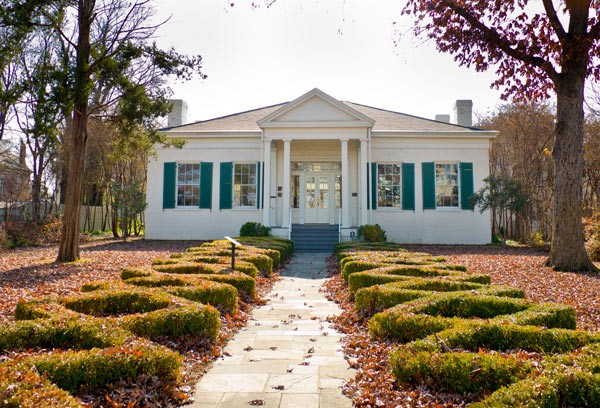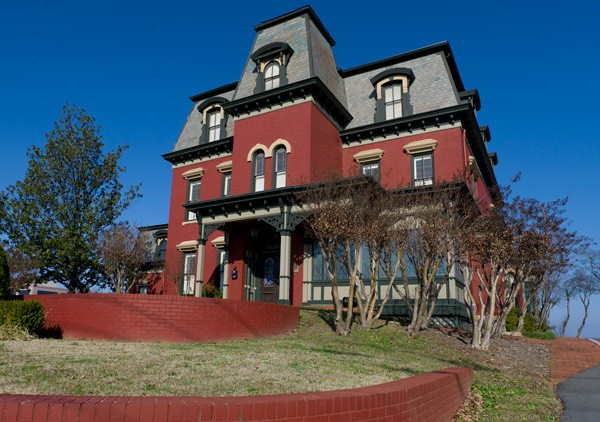The Historic Preservation Program of the Department of Arkansas Heritage, whose job it is to keep intact the tangible elements of our state’s history, provided the following list of the oldest houses in Pulaski County. All are on the National Historic Register.
The oldest building is the Hinderliter House at the corner of Cumberland and Third streets, also known as the Hinderliter Tavern. It was built in 1820 and is now part of the Historic Arkansas Museum. You can tour the Hinderliter, even dance there at the museum’s annual Christmas Frolic. The other 14 buildings, in chronological order:
1822: The Ten Mile House, 6915 Stagecoach Road. Originally named the Archibald McHenry House, it was built on the Old Southwest Trail 10 miles south of Little Rock. It was occupied by federal troops in September 1863, and was where David O. Dodd, the teenaged spy, was held before his hanging.
1836: The Old State House, 300 W. Markham St. Arkansas’s first state Capitol, used until 1911.
1840: Little Rock Arsenal, 503 E. Ninth St. Now the MacArthur Museum of Arkansas Military History, the arsenal ostensibly was constructed to help the city guard against Native American uprisings. It was held variously by Union and Confederate troops during the Civil War. The fact that Gen. Douglas MacArthur was born in the building gives it its name.
1840: Pike-Fletcher-Terry House, 411 E. 7th St. The home of Albert Pike (lawyer, poet and writer of “Dixie”) and Capt. John Gould Fletcher (father of the poet of the same name) the Terry Mansion is most remembered today as being the home of Adolphine Fletcher Terry, who convened the Women’s Emergency Committee there to reopen the city’s schools after Gov. Orval Faubus closed them in 1958 in defiance of integration.
1840: Absalom Fowler House, 502 E. Seventh St. Fowler, a lawyer said to have once thrown an inkwell at Chester Ashley, cutting him over the eye, called the house “Magnolia”; its later owners, the Gracie family, called it the “Gracie Mansion.” The Gracies sold it to the Catholic Diocese.

1842: Curran Hall, 615 E. Capital Ave. Owned by several prominent Arkansas families, including night-rider Jacob Frolich, who had to depart Arkansas for a while to avoid a murder charge, and Mary Eliza Bell, the daughter of Arkansas Gazette founder William E. Woodruff. It is now the Little Rock Visitor Information Center.
1843: Trapnall Hall, 423 E. Capital Ave. Built by a lawyer and legislator, the house had a succession of owners and might have been torn down had not Julia Taylor purchased it in 1929 and donated it to the Junior League, which used the building for many years as its headquarters. It is now owned by the state.
1845: White-Baucum House, 201 S. Izard St. Now undergoing renovation, this house was built for Arkansas Secretary of State Robert T.J. White and was then owned by banker-cotton broker-wholesale grocer George Baucum. It was occupied by the Mehlburger engineering firm for a time; more recently it was inhabited by vagrants until its sale in 2013 to Greg Hatcher.
1853: William E. Woodruff House, 1017 E. Eighth St. William Woodruff, who founded the Arkansas Gazette in 1819, built this large home, now east of Interstate 30. The Quapaw Quarter Association recently acquired the property with a grant from the city and the Arkansas Historic Preservation Program as a way to protect the property. It hopes to sell the house to an owner who will renovate the property, which has suffered fire damage and removal of many of its historic features.
1856: Harris House, southeast of Hensley on Hwy. 365. Robert G. Harris built this house from cypress lumber and bricks made of local material on the property.
1868: McKenzie House, 4911 Hwy. 161, Scott. Moved to its current location from Hazen to protect it from being demolished.
1869: First Hotze House, 1620 Main St. This house, at the corner of 16th and Cumberland streets, was built by Peter Hotze, an immigrant from Austria who made his fortune in the cotton trade with John Gould Fletcher. Hotze later built the large house directly in back of this house, facing Louisiana. In private hands now, it once was headquarters of the Ouachita Council of the Girl Scouts for many years.
1869: McDonald-Wait-Newton House (also known as the Packet House), 1406 Cantrell Road. Built by Union soldier and later U.S. Senator from Arkansas Alexander McDonald on what was then known as Lincoln Avenue, or “Carpetbaggers Row.” Later owned by the daughter of the family that built the Ten Mile House, and then her daughter, who married Tom Newton. It was converted to apartments in 1946 and was later altered for use as a succession of restaurants.
1871: Reichardt House, 1201 S. Welch St. This Victorina home was built by Austrian immigrant Edward Reichardt, who held part interest in the first street railway system in Little Rock. It stayed in the family until the death of Pauline Reichardt Hoeltzel in 1983, and remains in private ownership.


